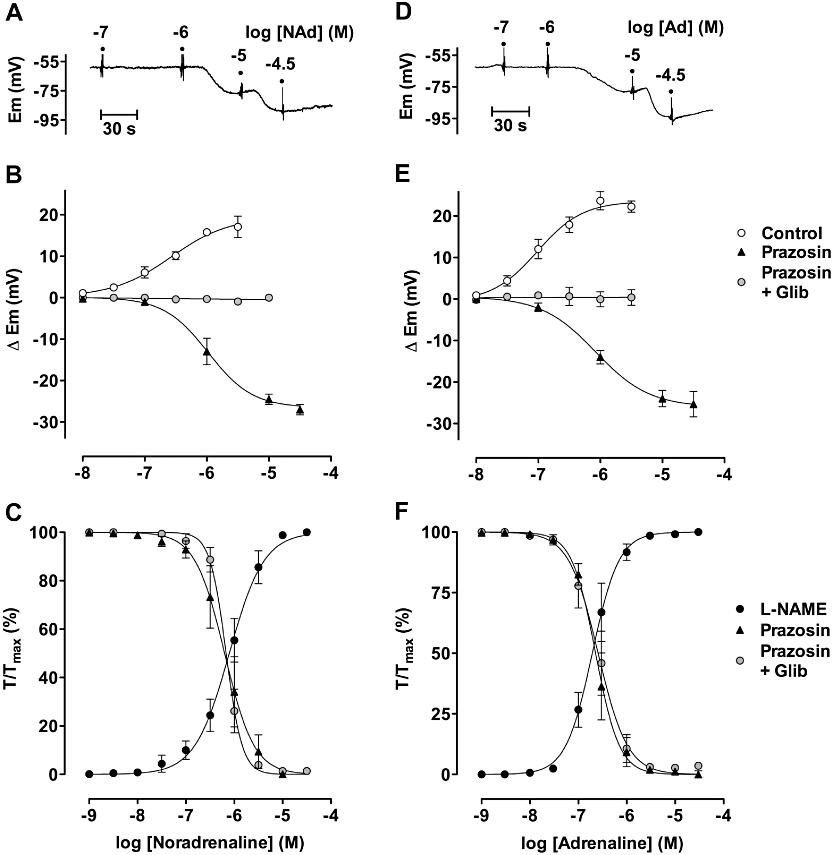Figure 2.

Concentration–responses of mesenteric arteries to noradrenaline (A–C) and adrenaline (D–F). Panels A and D show hyperpolarization recorded in the presence of 1 µM prazosin. These data are summarized in panels B and E (n = 4–11 in each case), which also show the mean depolarization (n = 11) obtained in the absence of prazosin and block of hyperpolarization with 5 µM glibenclamide (in the presence of 1 µM prazosin, n = 7 in each case). Panels C and F summarize contraction and relaxation to noradrenaline or adrenaline (n = 14 and 6 respectively). Contraction was blocked in the presence of 1 µM prazosin when, in the presence of contraction to U46619, each catecholamine stimulated relaxation that was insensitive to 5 µM glibenclamide across the entire range of concentrations (n = 6 in each case).
